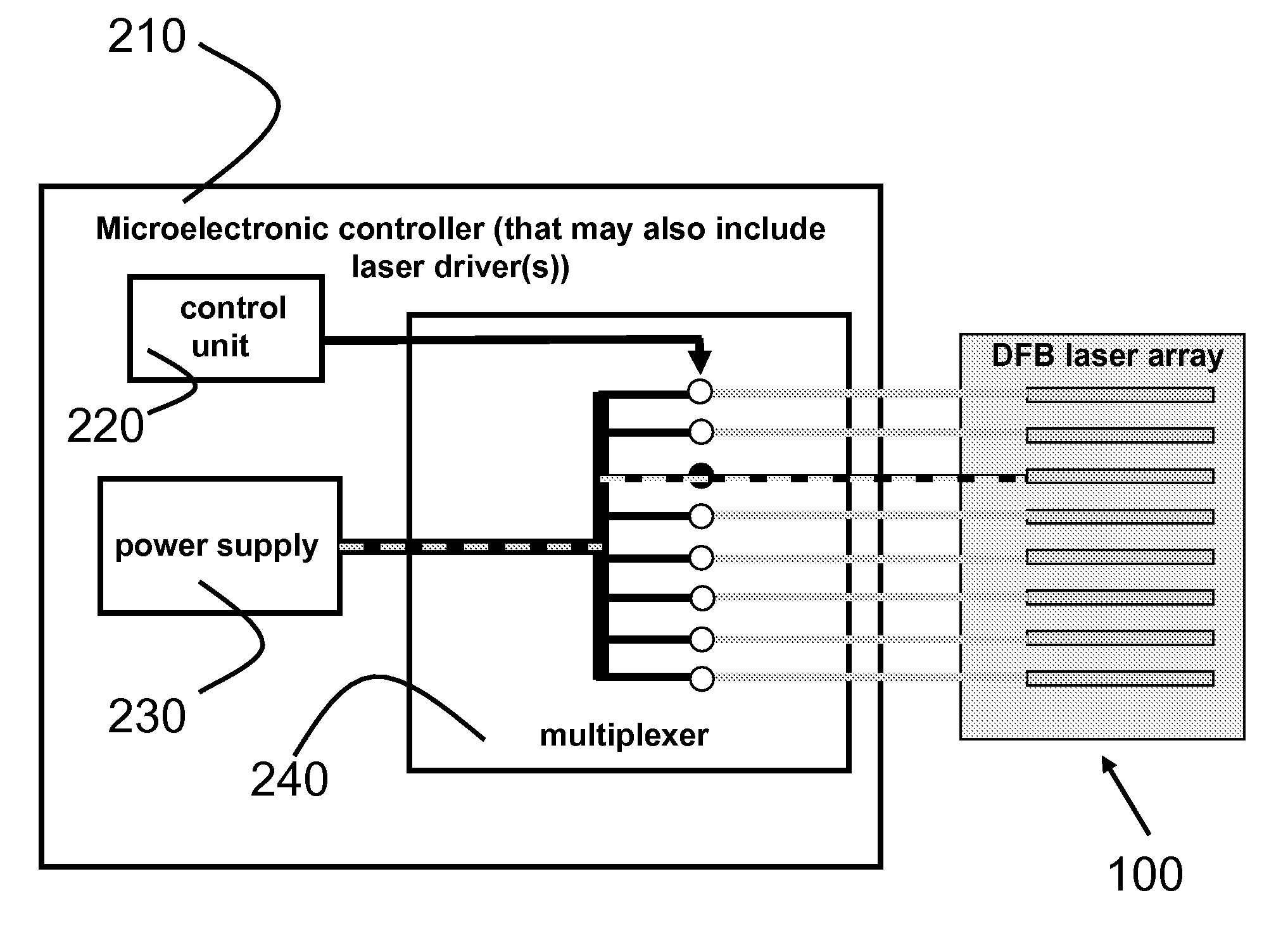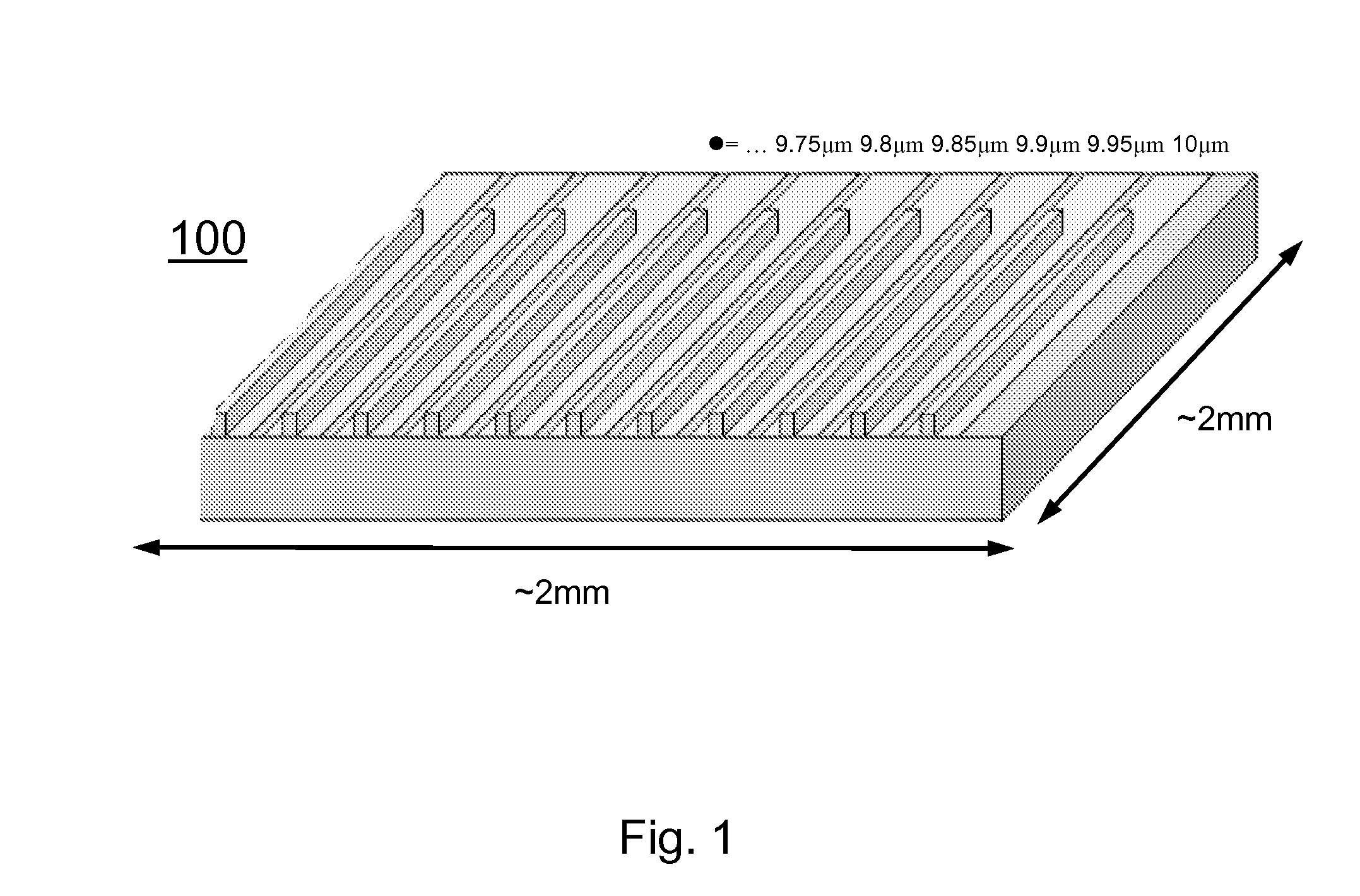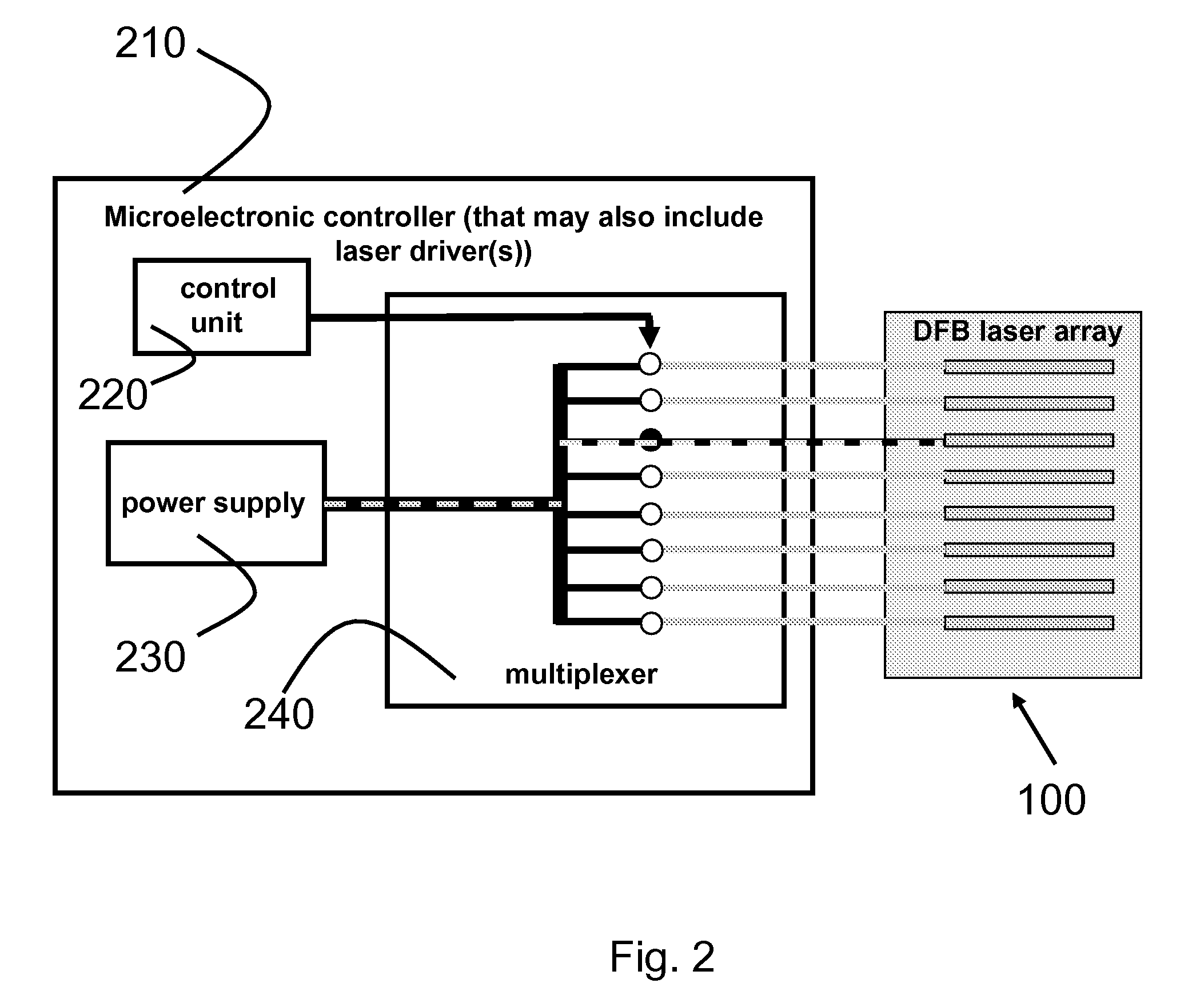Broadly tunable single-mode quantum cascade laser sources and sensors
a quantum cascade laser and single-mode technology, applied in semiconductor lasers, instruments, material analysis, etc., can solve the problems of cumbersome and complex construction, large tunability of external cavity qcls, and compact dfb lasers, and achieve the effect of convenient manufacturing
- Summary
- Abstract
- Description
- Claims
- Application Information
AI Technical Summary
Benefits of technology
Problems solved by technology
Method used
Image
Examples
Embodiment Construction
[0022]The present invention is a new broadly tunable single-mode infrared laser source based on QCLs. In a preferred embodiment, the invention comprises two parts: an array of closely-spaced DFB QCLs and a microelectronic controller which may incorporate laser driver(s). The controller can switch each of the individual lasers in the array on and off, set the current for each of the individual lasers in the array, and control the temperature of the lasers in the array. The device can be used in portable broadband sensors to simultaneously detect a large number of chemical compounds including chemical and biological agents.
[0023]As shown in FIG. 1, a DFB QCL array 100 is processed on the same broadband-gain (or multiple wavelength, or any other) QCL wafer. Each DFB QCL in the array has slightly different DFB grating. As an example, the target wavelengths (9.75 μm, 9.8 μm, etc.) for each of the DFB QCLs on a chip are listed in FIG. 1 along with the typical dimensions of the chip. Both ...
PUM
 Login to View More
Login to View More Abstract
Description
Claims
Application Information
 Login to View More
Login to View More - R&D
- Intellectual Property
- Life Sciences
- Materials
- Tech Scout
- Unparalleled Data Quality
- Higher Quality Content
- 60% Fewer Hallucinations
Browse by: Latest US Patents, China's latest patents, Technical Efficacy Thesaurus, Application Domain, Technology Topic, Popular Technical Reports.
© 2025 PatSnap. All rights reserved.Legal|Privacy policy|Modern Slavery Act Transparency Statement|Sitemap|About US| Contact US: help@patsnap.com



